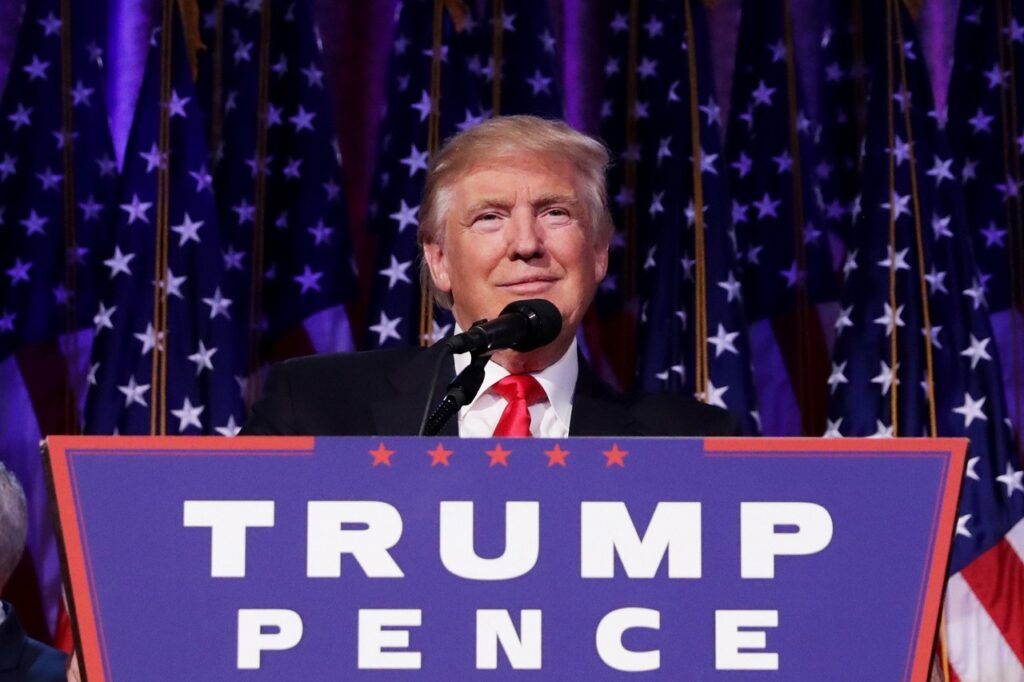President Donald Trump has once again decided to hit foreign steel and aluminum with a 25% tariff. If that sounds like déjà vu, it’s because he rolled out a nearly identical policy during his first term.
Steel and Aluminum Stocks React to Tariffs
Back then, the tariffs provided some relief to struggling American steel and aluminum producers, allowing them to raise prices and compete against global competition. Investors, anticipating a similar effect this time, quickly drove up steel and aluminum stocks on Monday. Nucor saw a 5.6% jump, Cleveland-Cliffs surged 17.9%, and Alcoa inched up 2.2%.
The Painful Consequences for U.S. Businesses
But the last round of tariffs came with baggage. They strained relationships with U.S. allies and squeezed American companies that depend on steel and aluminum to manufacture their products.
Timothy Zimmerman, CEO of Mitchell Metal Products in Merrill, Wisconsin, remembers the impact all too well.
“We got hit hard,” he recalled. “Domestic steel producers cranked up prices fast. Within months, we were paying 70% more for steel. Our suppliers didn’t negotiate—they just canceled contracts and gave us two choices: pay up or get nothing.”
Zimmerman’s company couldn’t simply pass those costs onto customers, which included furniture makers and telecom firms. Their contracts locked them in, forcing them to absorb the higher costs. That squeezed profit margins and sent customers looking elsewhere—often to European competitors unburdened by U.S. tariffs.
Minimal Economic Impact Expected
Despite the disruptions, the overall economic effect remained minor then and likely will this time, too. Steel and aluminum imports barely make a dent in the nearly $30 trillion U.S. economy.
Still, these tariffs—along with Trump’s broader plan to raise tariffs to match those of other countries—will probably fuel inflation and slow global economic growth, according to Jennifer McKeown and Hamad Hussain of Capital Economics.
A Familiar Blow to U.S. Allies
The latest tariffs will land hardest on America’s closest trading partners. Canada, the top supplier of foreign steel and aluminum to the U.S., will feel the sting first. Mexico, the third-largest steel supplier, along with Japan and South Korea, will also take a hit.
China, often blamed for flooding the global market with cheap steel, plays a surprisingly small role in direct U.S. steel imports. Existing trade barriers have already restricted Chinese steel exports to the U.S. to less than 2% of total steel imports, ranking China just tenth among suppliers, according to the American Iron and Steel Institute.
Trump Uses Section 232 to Justify Tariffs
Trump revived Section 232 of the Trade Expansion Act of 1962 to justify his move, citing national security concerns. The same statute underpinned his 2018 tariffs—25% on steel and 10% on aluminum—triggering outrage in Canada and Mexico. U.S. allies balked at being labeled security threats and retaliated with tariffs on American goods, from Kentucky bourbon to Levi’s jeans.
Tariffs Take a Toll on U.S. Manufacturing
While American steelmakers capitalized on higher prices, downstream manufacturers like Zimmerman’s suffered. A 2023 study from the U.S. International Trade Commission found that in 2021, the tariffs wiped out nearly $3.5 billion in production from downstream manufacturers, negating the $2.3 billion boost to steel and aluminum production.
Harvard and University of California, Davis researchers estimated in 2020 that Trump’s tariffs created just 1,000 new steel and aluminum jobs but erased 75,000 jobs elsewhere in manufacturing.
Mitchell Metal Products, which employed 102 people before the tariffs, had to shrink its workforce. The company left vacant positions unfilled and let go of workers, dropping staff numbers to around 75.
Experts Predict Repeat Consequences
Gary Hufbauer, a senior fellow at the Peterson Institute for International Economics, sees history repeating itself. “Trump’s first-term trade wars—including tariffs on Chinese imports—hurt American industry,” he said. “I expect the same outcome this time.”
The 2018 tariffs were later softened; some were removed, while others were replaced with import quotas. But on Monday, Trump erased all exemptions and raised the aluminum tariff from 10% to 25%.
Businesses Brace for the Impact
Zimmerman is bracing for another hit. “Last week, several major U.S. steel mills raised prices—before the tariffs even took effect,” he noted. “It’s the same playbook from 2018.”
This time, his company plans to negotiate with customers to absorb some of the rising costs. “Otherwise,” he warned, “we’re in a very tough spot.




Comments